The Wood Anemone is a flower of contradictory folklore. The Ancient Romans liked to wear it around their necks as a charm against illness, whilst people in the Middle Ages would hold their breath when walking past the flowers, for fear of contracting a deadly illness from the Wood Anemones’ scent. Our medieval ancestors weren’t far off: Wood Anemones are poisonous, although you don’t quite need to hold your breath when walking past a patch in the woods.
17th Century herbalist Nicholas Culpepper (1616-1654), called Wood Anemones, ‘Windflowers’. Like Pliny the Elder (23 - 79AD) before him, he noted that the flowers only open when the wind blows.
The old Greek word Anemos (wind) goes all the way back to ‘ane’, the PIE word for breathing. And that gets us to the Anemoi, the Greek gods of the four winds.
God of the West winds, Zephyros, fell in love with a delicate and pretty nymph. This nymph however, had the awkward habit of falling in love with every male she met. She had a thing for gods in particular. Zephyros, worried that if she met Zeus, who could pop up anywhere any time, his own chances with her would be over. He went to see Hera, Zeus’ long suffering wife (Zeus was a notorious womaniser), to see if she could help prevent Zeus from meeting his dainty little nymph.
As Greek gods have a habit of doing (see also Crocus and the Daisy), Hera in her wisdom turned the nymph into a little flower and planted her in dense woodland, so that nobody could find her. Unfortunately that included Zephyros, which wasn’t quite what he had in mind. Heartbroken, Zephyros blew his west-wind way around the world, searching for his nymph. Finally, whilst blowing about one day in early spring, he found her. Her flowers opened up when his breath blew over her, and at the same time the first rays of spring sunshine broke through the woodland.
To protect their tender stamens, Wood Anemones bow down their blooms when it rains, providing perfect shelter for fairies according to ancient British folklore.
Wood Anemone is also known as ‘Smell Fox’. It was common for ancient people to refer to stinky things as having a smell of bears, badgers or foxes. Maybe this was the origin of passers by holding their breath in the Middle Ages.
Another name for Wood Anemone is ‘Moggie Nightgown’. Moggie in some English dialects means mouse (rather than cat). A nightgown for mice. Very pretty indeed!
The word ‘wood’ comes from the Old English word wudu, which could mean both ‘tree’ or ‘collection of trees’. This goes back to the PIE word ‘whidu’ which meant tree, forest, grove, or the material trees are made from. This same word led to the word for ‘wood’ in many other North European countries. For example, ’woud’ in Dutch, ‘Wald’ in German, ‘ved’ in Swedish, ‘Gwydd’ in Welsh and ‘walden’ in Frisian. In this case ‘wood’ usually relates to wild, uncultivated woodland.
The 2nd part of the Wood Anemone’s scientific name, ‘Nemorosa’, also means ‘from the woods or shady places’.
There are many other names for Wood Anemones: Wood Crowfoot, Grandmother's Nightcap, Thunderbolt (it was believed that picking it could cause thunderstorms), Thimble Weed, Silver Bells, Drops of Snow, Candlemas Caps (Candlemas is celebrated on the 2nd of February) and Moonflower.
This newsletter is NOT a field guide for flower identification. It’s often difficult to tell the difference between harmless plants and poisonous plants and some flowers are rare and protected by law, so, NEVER pick or use any plants or flowers if you’re not sure about them.
illustrations and text ©Chantal Bourgonje


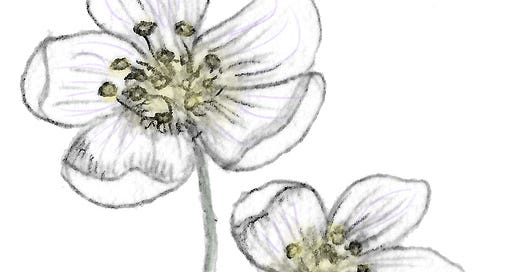





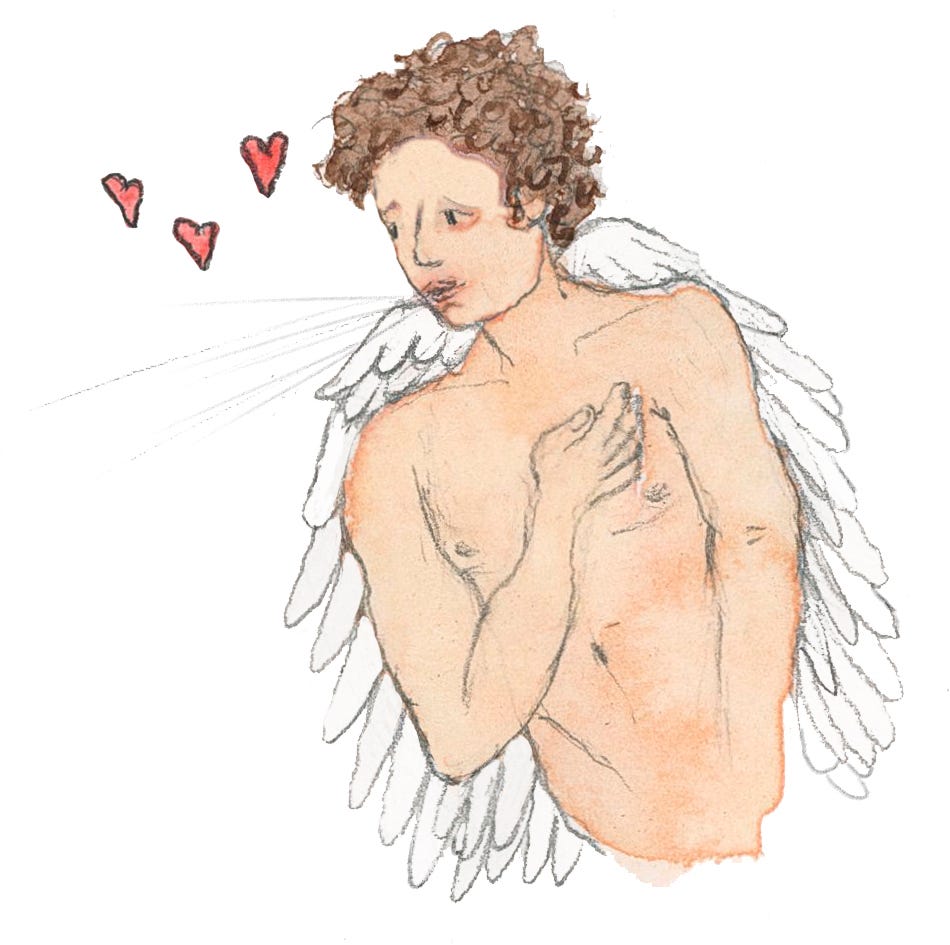
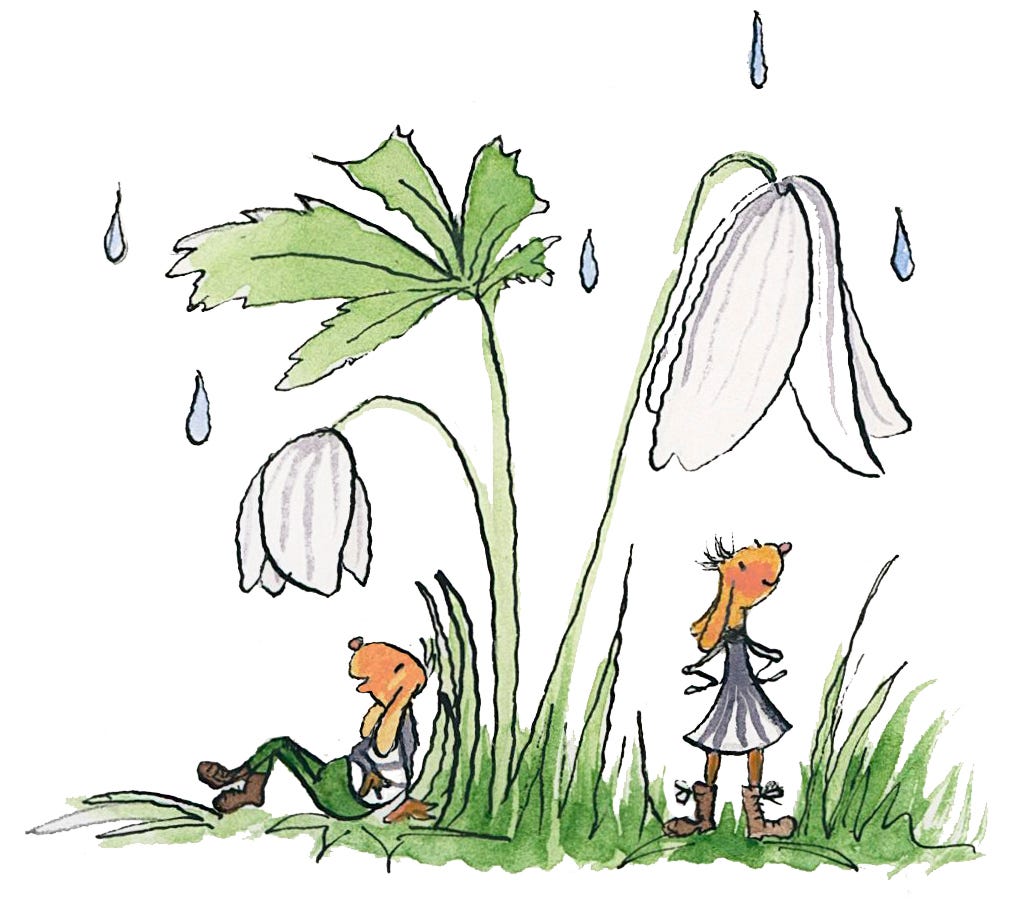
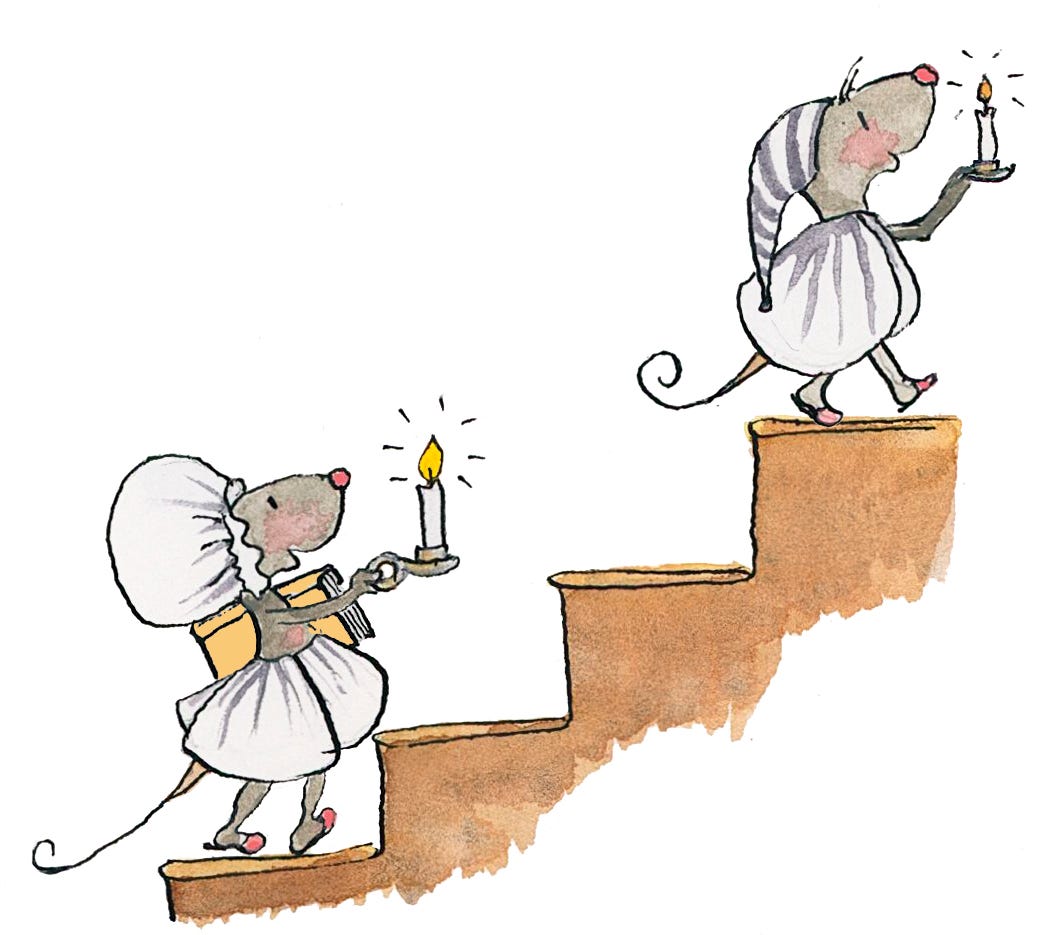

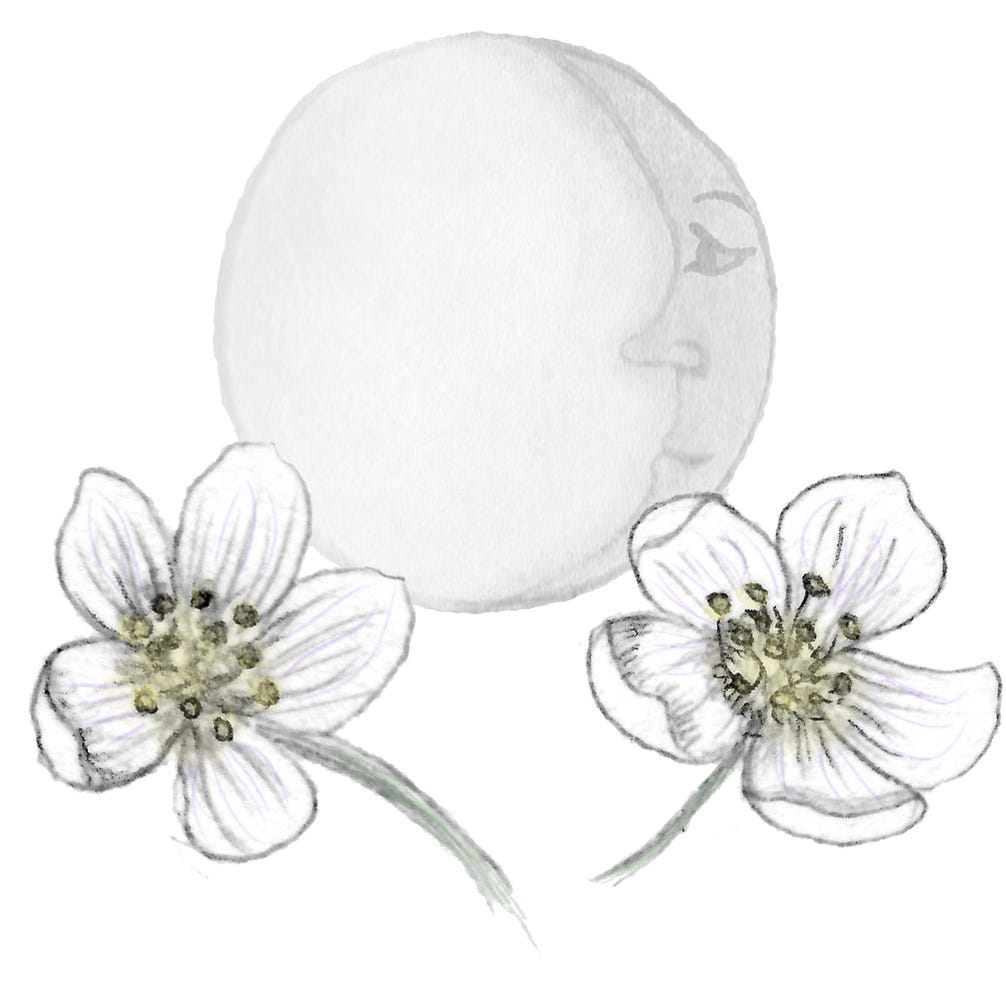

Your writing and illustrations are delightful. And my favourite flower, yet to see one up here though... 🌼
Who would know that such a sweet little flower had such a personality!